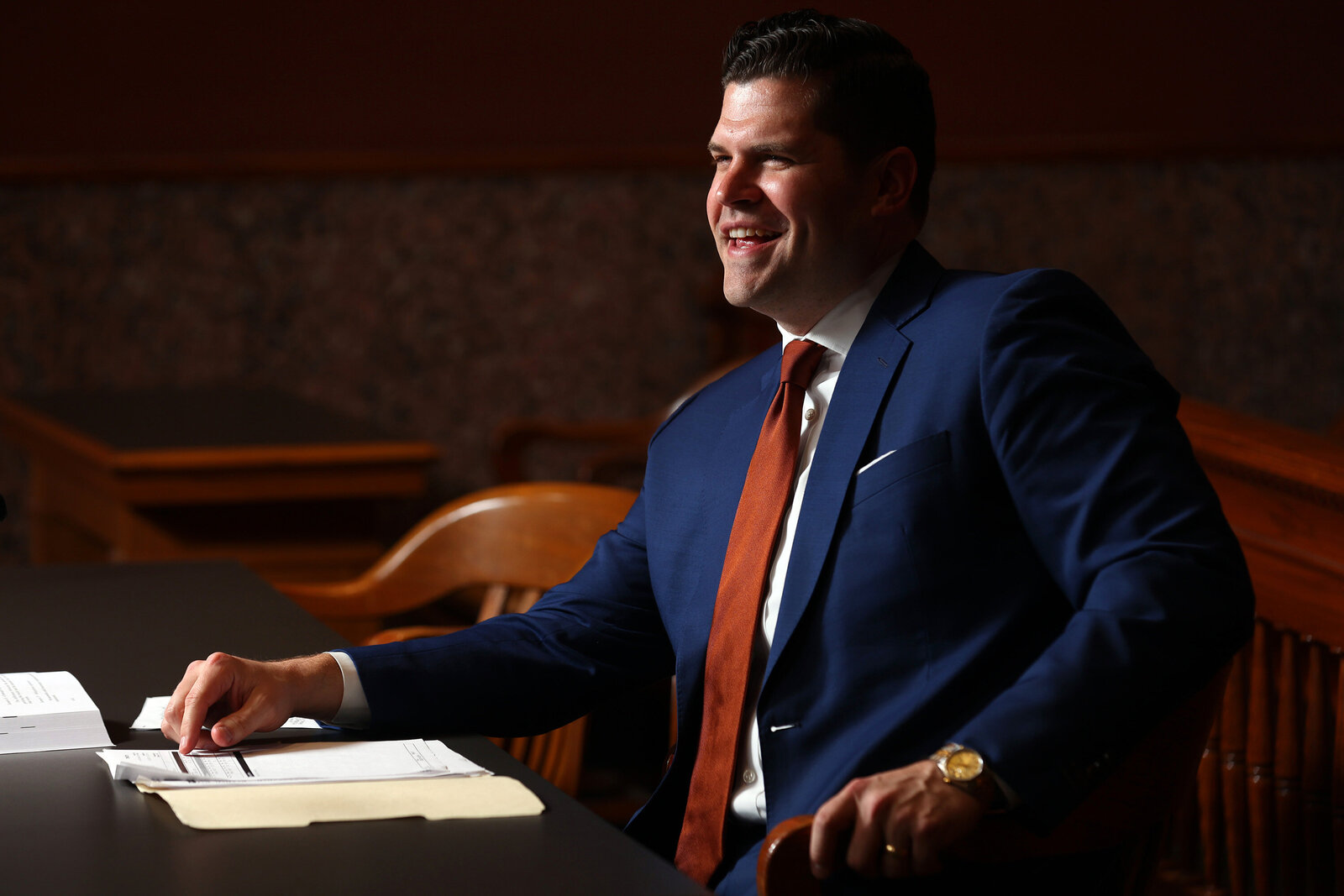By Graham Norris
The gavel falls, and suddenly a law-abiding Texan finds themselves facing serious firearm charges. What seemed like a routine traffic stop or a misunderstanding has spiraled into a criminal case that could change everything. In a state known for its gun-friendly culture, many people assume firearm laws are straightforward – but the reality is far more complex.
Texas firearm cases often hinge on technical legal details that can make or break a defense. The difference between conviction and acquittal frequently comes down to understanding constitutional protections, recognizing how multiple charges interact, and knowing when self-defense laws apply. With the right strategy, even seemingly strong prosecution cases can be successfully challenged.
Facing Criminal Charges in Fort Worth?
Don’t wait – your freedom and future are at stake. Get experienced legal representation now.
Call (817) 859-8985 Free ConsultationAvailable 24/7 • Former Prosecutor • Award-Winning Defense
Constitutional Challenges: Search and Seizure Defense Strategies
The foundation of many firearm cases crumbles when the initial police contact is examined closely. Law enforcement officers must follow strict constitutional guidelines when stopping vehicles, conducting searches, and seizing evidence. When these procedures are violated, even legally possessed firearms can become the center of criminal charges.
Key Areas for Constitutional Challenges
Traffic stop validity – Officers need reasonable suspicion of a traffic violation or criminal activity to initiate a stop. Pretextual stops based on minor infractions may be challengeable if the real purpose was fishing for evidence.
Search authorization – Police cannot search vehicles or persons without consent, probable cause, or a warrant. Many firearm discoveries result from illegal searches that should never have occurred.
Probable cause standards – The smell of marijuana, nervous behavior, or vague “suspicious activity” may not meet the legal threshold for expanding a simple traffic stop into a full investigation.
Miranda rights violations – Statements made during custodial interrogation without proper warnings can be suppressed, often eliminating key prosecution evidence.
Evidence chain of custody – Proper documentation and handling of seized firearms is required. Breaks in the chain can lead to evidence being excluded from trial.
When constitutional violations are proven, the exclusionary rule prevents prosecutors from using illegally obtained evidence. This often results in case dismissal since firearm charges typically depend heavily on the physical evidence seized during the unlawful search.
Challenging the Underlying Offense: When the Primary Charge Fails
Many people don’t realize that firearm possession becomes illegal only when combined with another criminal offense. Texas law often makes it unlawful to carry a weapon while committing certain crimes, but if the underlying crime never happened, the firearm charge disappears too.
Common Scenarios
Consider a driver pulled over and charged with driving while intoxicated. During the arrest, police discover a legally owned handgun in the glove compartment. Now the driver faces both DWI and unlawful carrying charges. But if the DWI charge can’t be proven, the firearm was never illegally possessed. Understanding Texas Penal Code DWI becomes crucial in these compound cases.
This principle applies to numerous situations:
- Drug paraphernalia charges combined with firearm possession
- Domestic violence allegations that make firearm possession criminal
- Disorderly conduct charges that escalate when weapons are present
According to Texas Penal Code Section 46.02, many firearm violations depend on the commission of another offense. Smart defense strategy attacks every charge aggressively. By dismantling the foundation offense, the entire prosecution theory can collapse. Understanding what the Texas Penal Code says about firearm crimes helps identify these dependency relationships.
Building a Self-Defense Case: Evidence Gathering and Reasonable Force Arguments
Texas provides some of the strongest self-defense protections in the nation, but successfully invoking these laws requires meticulous preparation and strategic presentation. The key is demonstrating that force was reasonable given the specific threat faced at that critical moment.
Understanding Texas Self-Defense Laws
Texas recognizes both Stand Your Ground principles and the Castle Doctrine, allowing individuals to use reasonable force – including deadly force – to protect themselves and others without a duty to retreat. The critical legal standard centers on whether the force used was reasonable in proportion to the threat faced. However, many people hold Texas self-defense misconceptions that can undermine their defense strategy.
Critical Evidence Collection
Building a compelling self-defense case depends on comprehensive evidence gathering from the earliest stages:
- Video footage from security cameras, cell phones, or dashcams
- Witness statements establishing timeline and corroborating events
- Defendant’s account of their mental state and perception during the confrontation
- Pattern evidence of the aggressor’s history of violent or threatening behavior
The Power of Pattern Evidence
Successful self-defense strategies often focus on establishing the aggressor’s history of violent or threatening behavior. When the person who was shot or threatened had a documented pattern of aggression, it supports the defendant’s reasonable fear for their safety. This might include prior arrests, protective orders, witness accounts of previous threats, or evidence of escalating behavior.
The goal is helping the jury understand the split-second decision the defendant faced. By presenting evidence that puts them in the defendant’s shoes, a skilled attorney can demonstrate that the defensive action was the only reasonable choice available. Understanding Texas Penal Code self-defense statutes provides the legal framework for these arguments.
Real-World Outcomes: How These Strategies Lead to Victory
Understanding defense strategies is one thing – seeing how they work in actual courtrooms is another. When properly executed, these approaches consistently deliver positive outcomes for clients facing firearm charges across Texas.
Complete Case Dismissals
Constitutional challenges produce some of the most decisive victories in firearm cases. When evidence is suppressed due to illegal searches or improper stops, prosecutors often have no choice but to dismiss charges entirely. These dismissals can happen relatively quickly – sometimes within weeks of filing the appropriate motions.
Negotiated Resolutions
Not every case ends in outright dismissal, but strong defense strategies create powerful leverage for plea negotiations. Prosecutors facing weak underlying charges or constitutional challenges often agree to significantly reduced charges or alternative sentences. This might mean reducing a felony to a misdemeanor, agreeing to deferred adjudication, or accepting community service instead of jail time.
Jury Trial Victories
Self-defense cases that go to trial can result in complete acquittals when the evidence clearly supports reasonable force claims. According to Texas criminal justice statistics, Texas juries are generally sympathetic to legitimate self-defense arguments, especially when presented with comprehensive evidence about the threat faced and the defendant’s state of mind.
Timeline and Process Expectations
Constitutional challenges and motion practice typically resolve within 2-4 months, while cases proceeding to trial may take 6-12 months. However, the investment in thorough preparation often pays dividends through better outcomes.
Why Every Detail Matters
Self-defense cases succeed or fail based on the totality of circumstances. The time of day, lighting conditions, the defendant’s physical size compared to the aggressor, whether escape routes were available, and dozens of other factors all influence whether force was reasonable.
This is why immediate legal intervention is crucial in potential self-defense cases. Evidence disappears, witnesses forget details, and surveillance footage gets deleted. The window for building a strong defense closes quickly, making early and aggressive investigation essential for protecting constitutional rights. Even situations involving deadly conduct with a firearm can sometimes be successfully defended with proper preparation and evidence gathering.
Protecting Your Future
The strategies outlined above have proven successful in countless firearm cases, but they require immediate implementation and experienced execution. Every day that passes without proper legal representation is a day when crucial evidence may disappear, witnesses’ memories fade, and your constitutional rights remain unprotected.
Whether you’re facing charges for unlawful carrying, aggravated assault with a deadly weapon, or need to build a self-defense case, understanding your constitutional rights and working with experienced counsel is essential. The window for mounting an effective defense is closing with each passing day.
Don’t let another day pass without experienced advocacy fighting for your future – seek qualified legal representation today for a confidential consultation and take the first step toward protecting your rights and your freedom.

Graham Norris
Principal Attorney & Founder, Norris Legal Group PLLC
Graham Norris is an award-winning criminal defense attorney and former Tarrant County prosecutor with over a decade of courtroom experience. He has earned countless dismissals and not guilty verdicts on charges ranging from misdemeanor assault to felony murder. Graham has been recognized as a National Trial Lawyers Top 40 Under 40 attorney, named a Texas Monthly Super Lawyers Rising Star, and selected as a Top Attorney by Fort Worth Magazine.
Former Assistant District Attorney • Texas A&M School of Law Graduate • Member, National Order of Barristers
Need Legal Help? Call (817) 859-8985
Read the Comments +